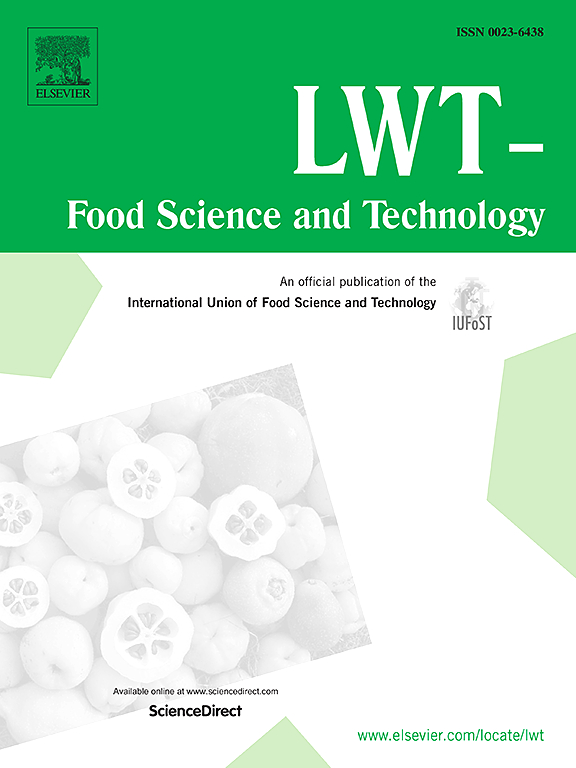Comparative analysis of defatted and non-defatted zein on dough characteristics in gluten-free and wheat systems
IF 6
1区 农林科学
Q1 FOOD SCIENCE & TECHNOLOGY
引用次数: 0
Abstract
In this study, the effects of adding defatted and non-defatted zein on the viscoelasticity, water distribution, protein molecular and structural changes in reconstituted wheat dough and reconstituted starch dough were investigated using a reconstitution approach. The addition of zein resulted in higher creep strain and recovery strain in reconstituted dough compared to reconstituted starch dough, with defatted zein increasing the creep strain by 29.35%. Compared to defatted zein-reconstituted wheat dough (NLZW), the defatted zein-reconstituted starch dough (NLZS) exhibited weaker water-binding capacity, with the proportion of bound water decreasing by 13.48% and immobilized water by 3.78%. Size-exclusion high-performance liquid chromatography (SE-HPLC), fluorescence spectroscopy, and non-covalent interaction analysis revealed that, compared to NLZS samples, zein promoted an increase in sodium dodecyl sulfate (SDS)-extractable protein content, fluorescence intensity, and non-covalent interactions in NLZW samples. Thermomechanical properties and microstructural analysis showed that the weight loss of NLZW was 2.42% lower than that of NLZS, and the protein network formed by defatted zein and gluten in NLZW enhanced the structural stability of the reconstituted dough. These findings provided valuable insight into the potential of defatted zein for enhancing dough stability and functionality in both gluten-free and wheat-based systems.
求助全文
约1分钟内获得全文
求助全文
来源期刊

LWT - Food Science and Technology
工程技术-食品科技
CiteScore
11.80
自引率
6.70%
发文量
1724
审稿时长
65 days
期刊介绍:
LWT - Food Science and Technology is an international journal that publishes innovative papers in the fields of food chemistry, biochemistry, microbiology, technology and nutrition. The work described should be innovative either in the approach or in the methods used. The significance of the results either for the science community or for the food industry must also be specified. Contributions written in English are welcomed in the form of review articles, short reviews, research papers, and research notes. Papers featuring animal trials and cell cultures are outside the scope of the journal and will not be considered for publication.
 求助内容:
求助内容: 应助结果提醒方式:
应助结果提醒方式:


